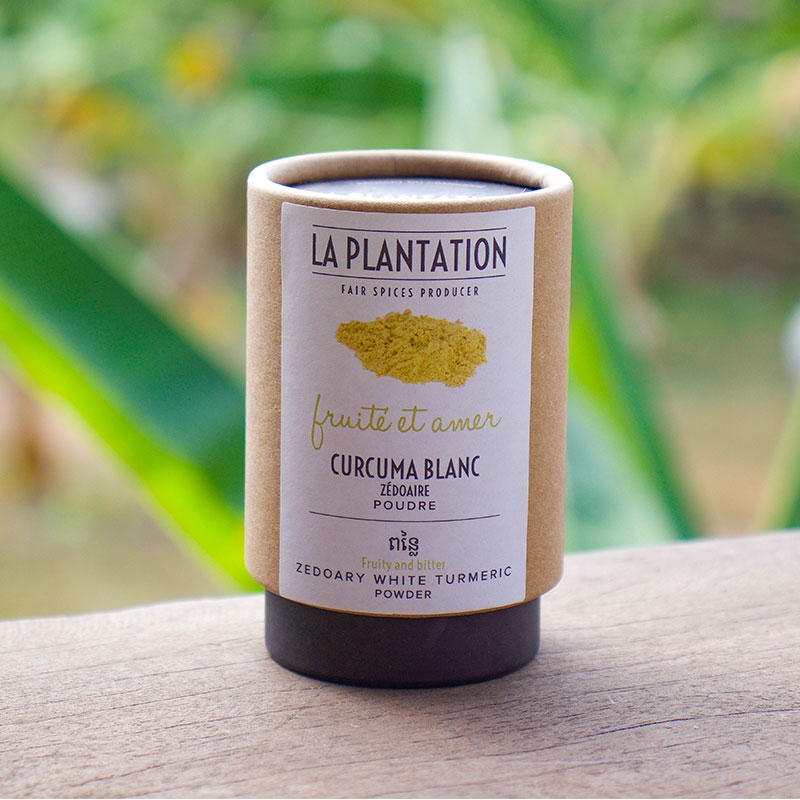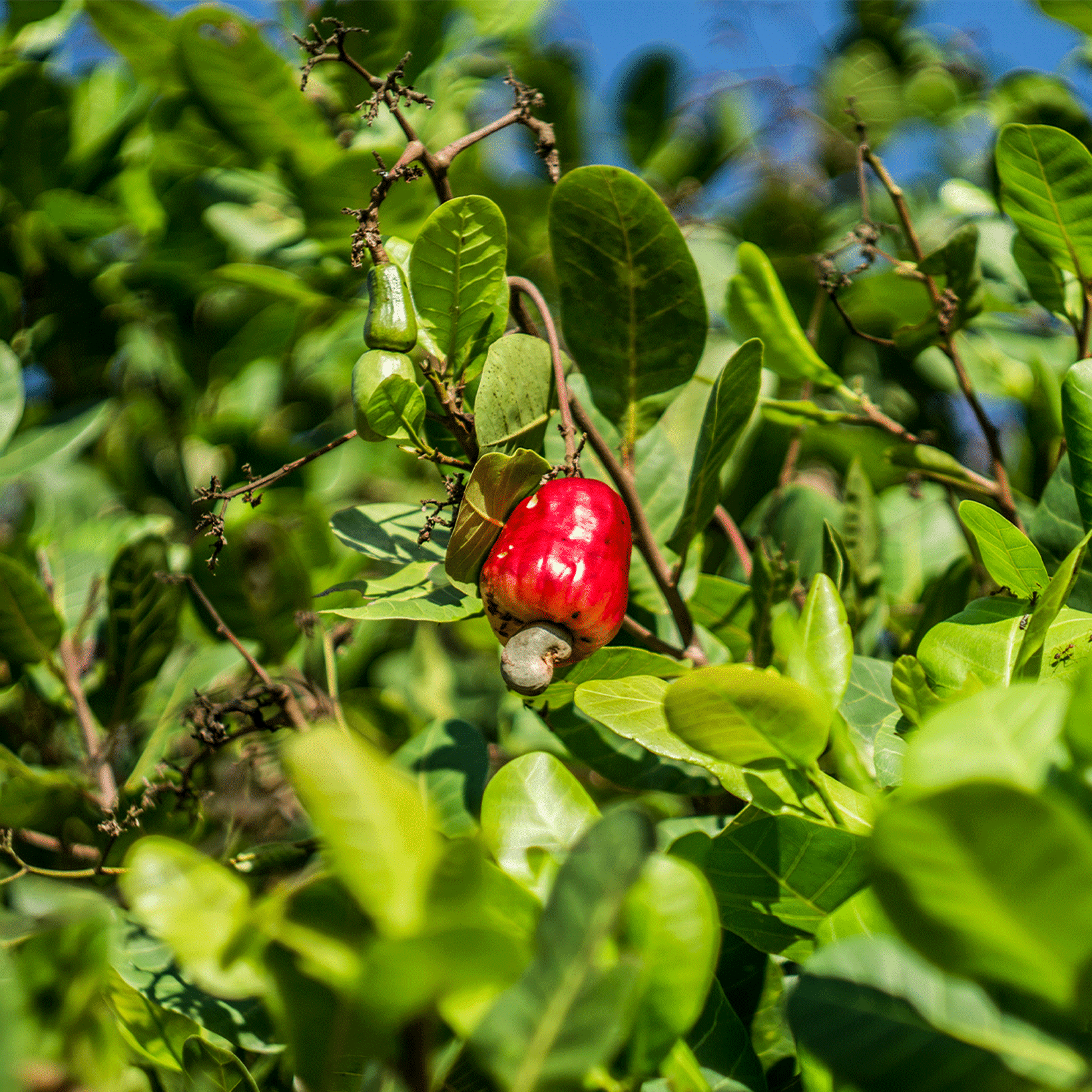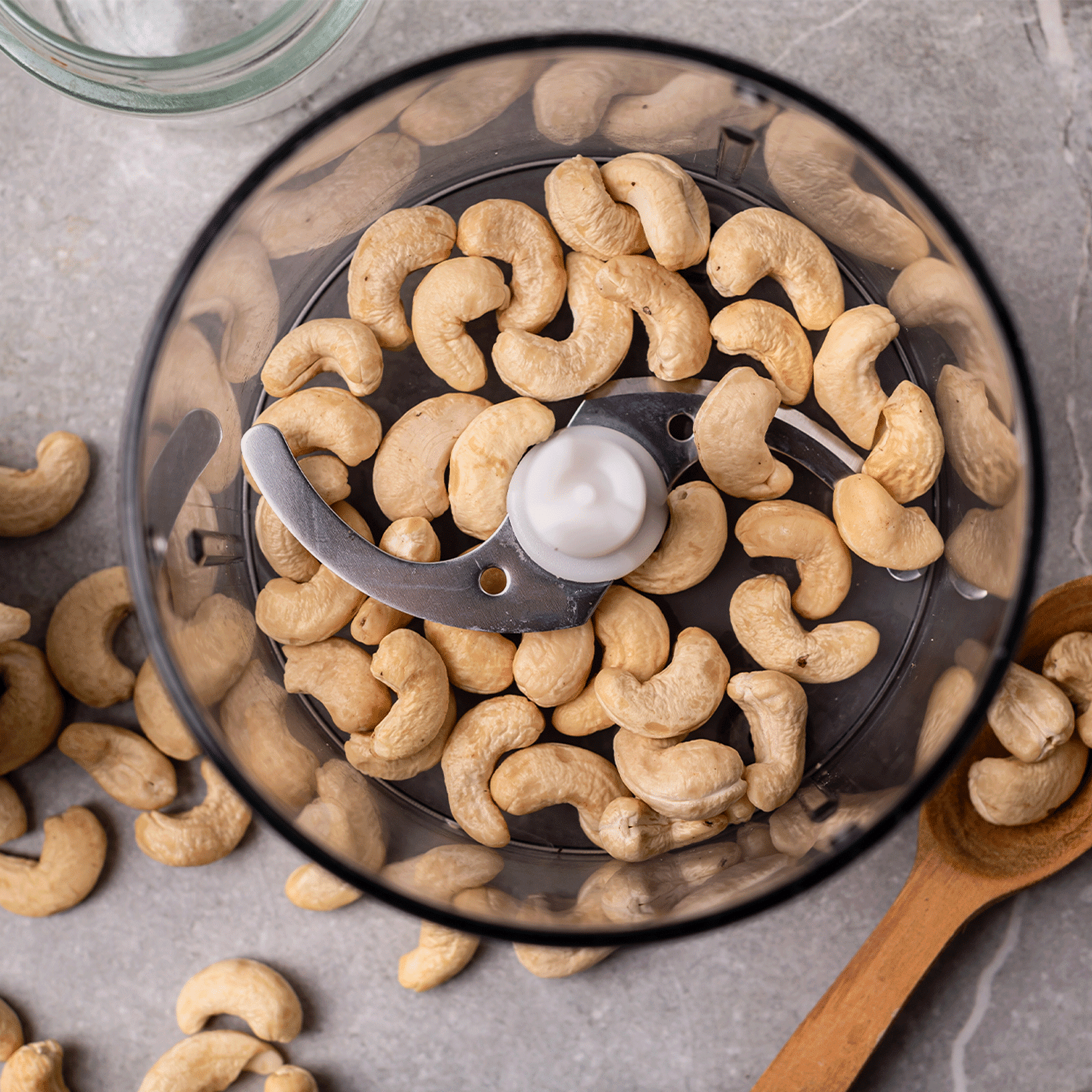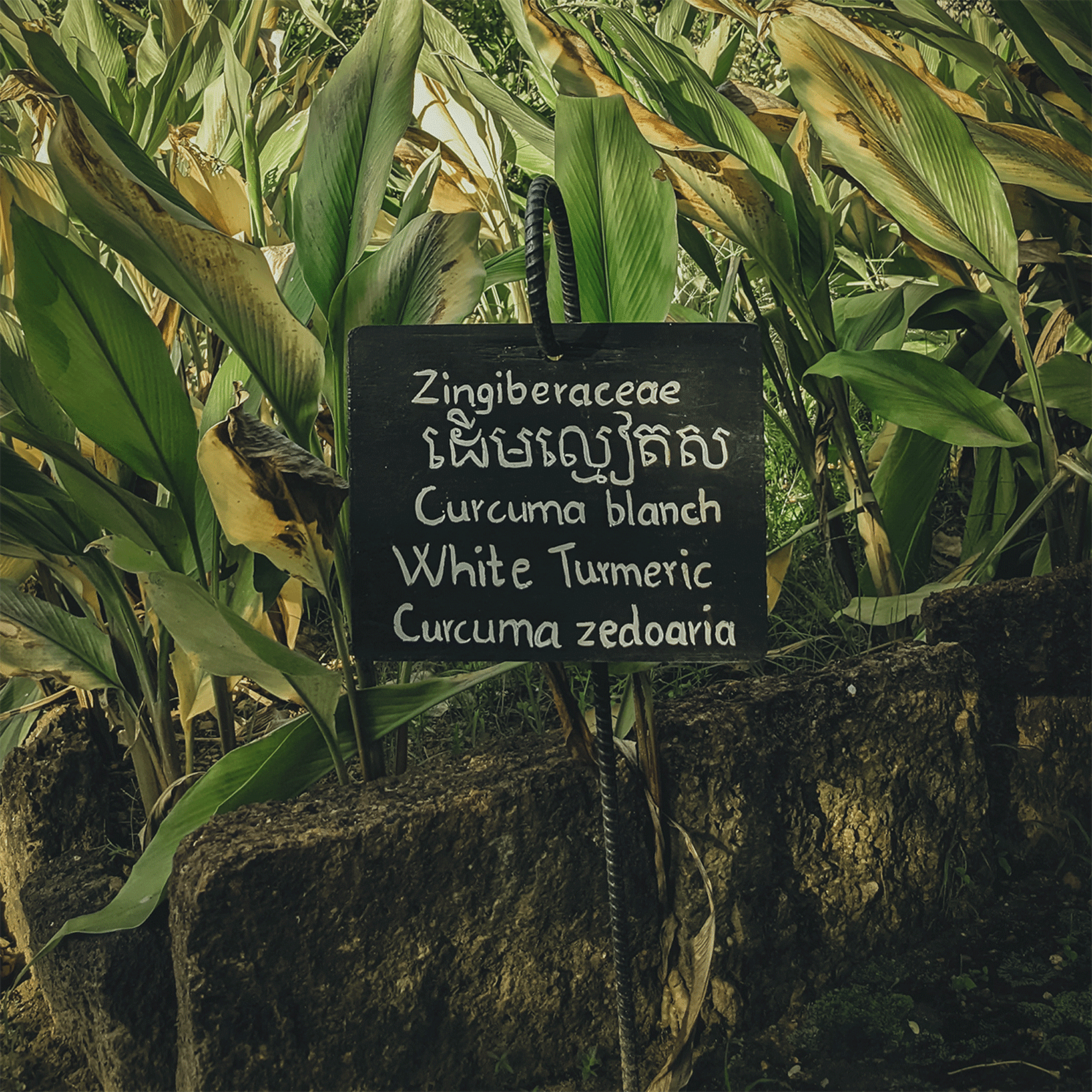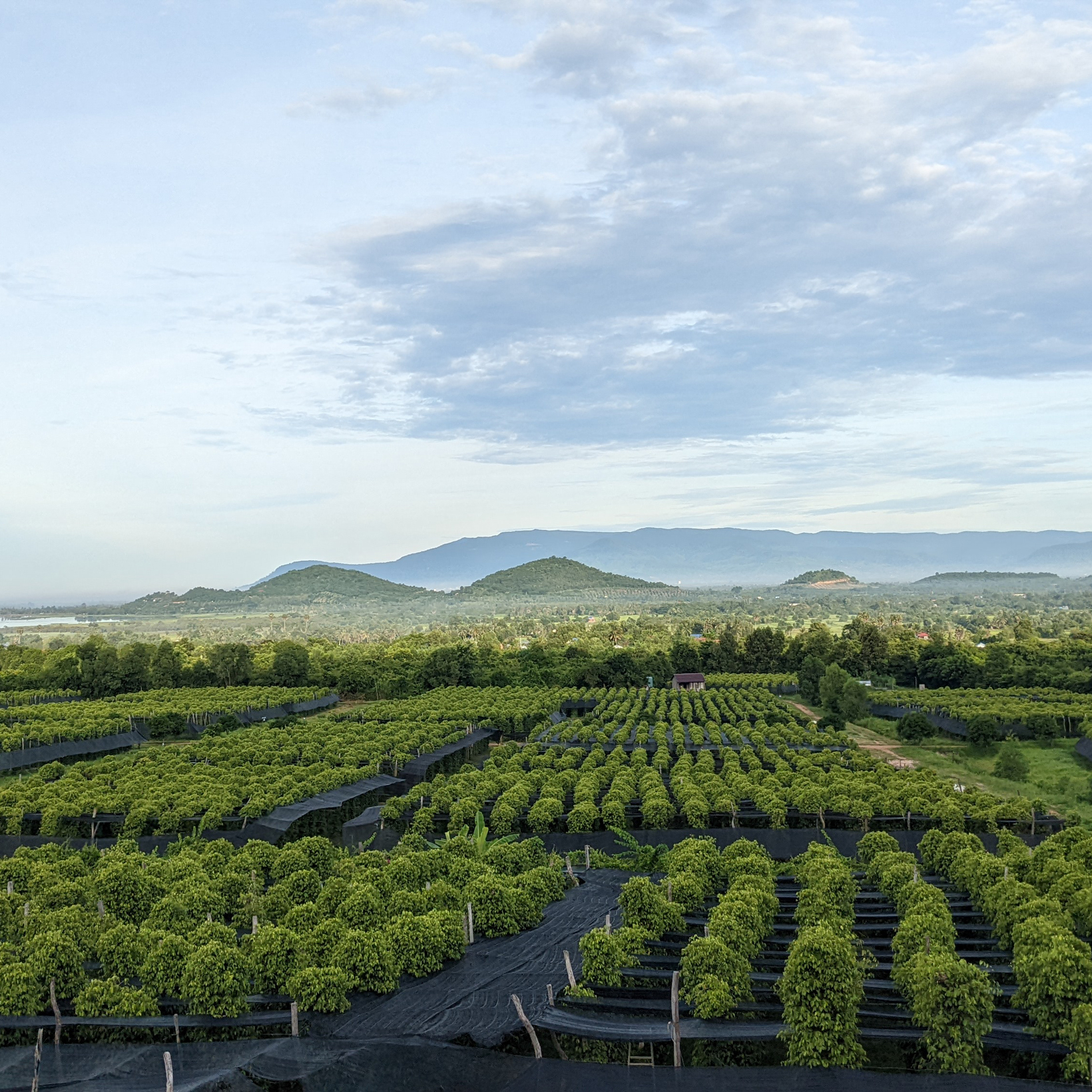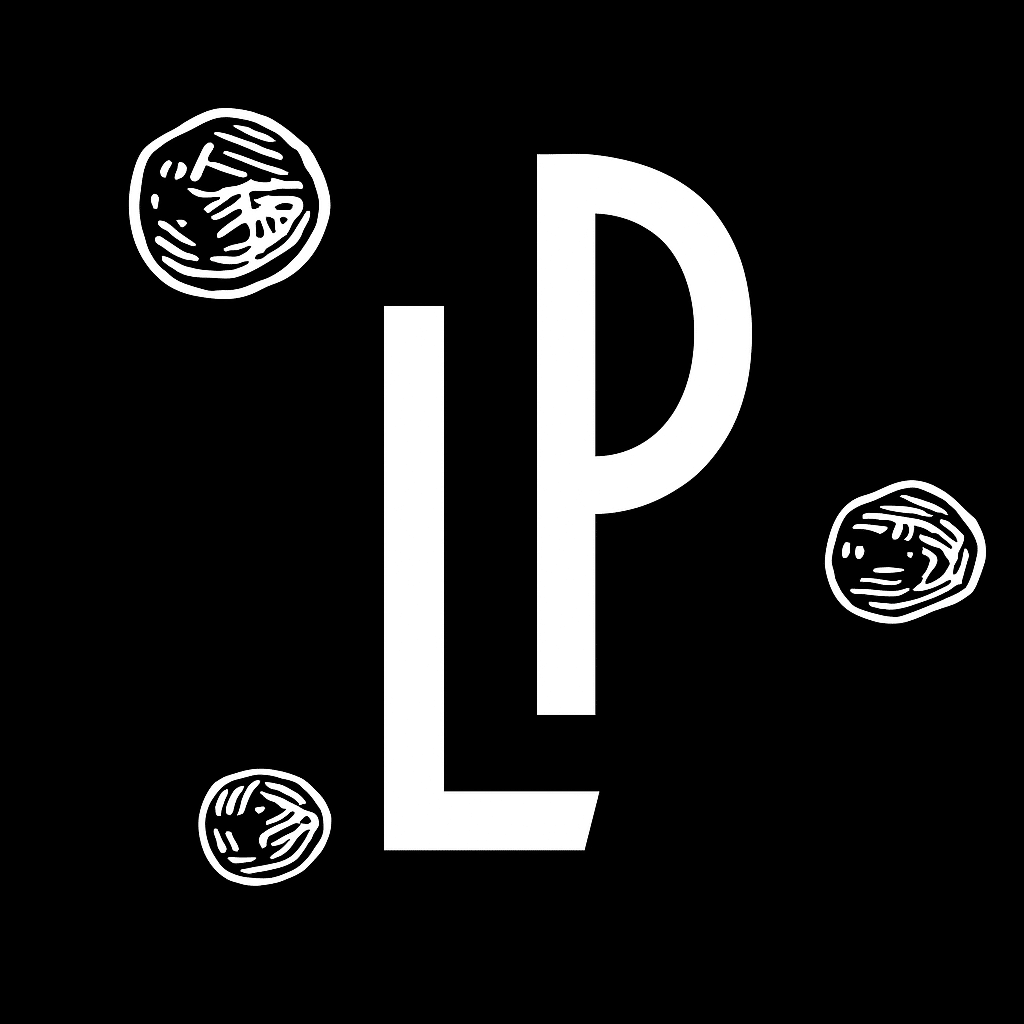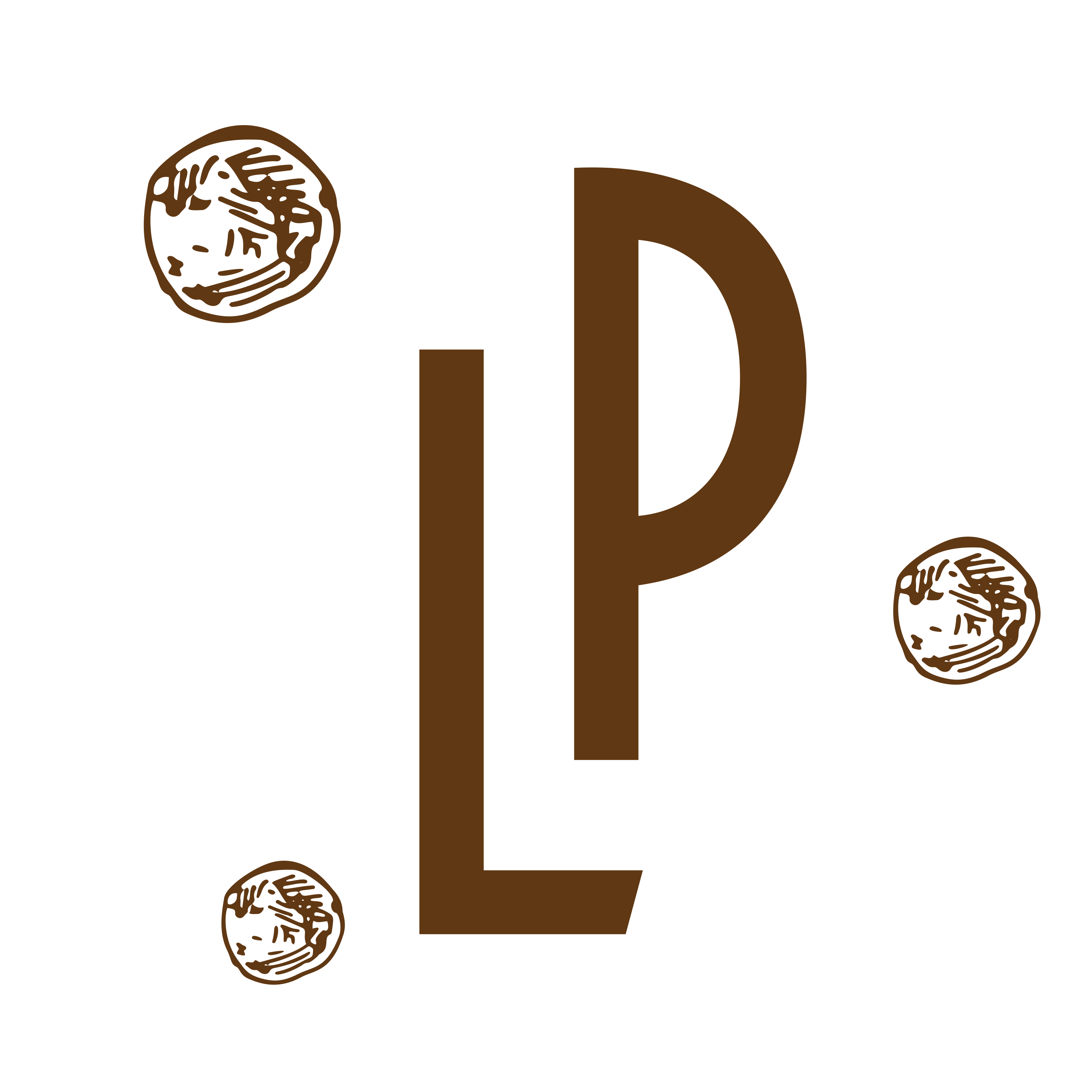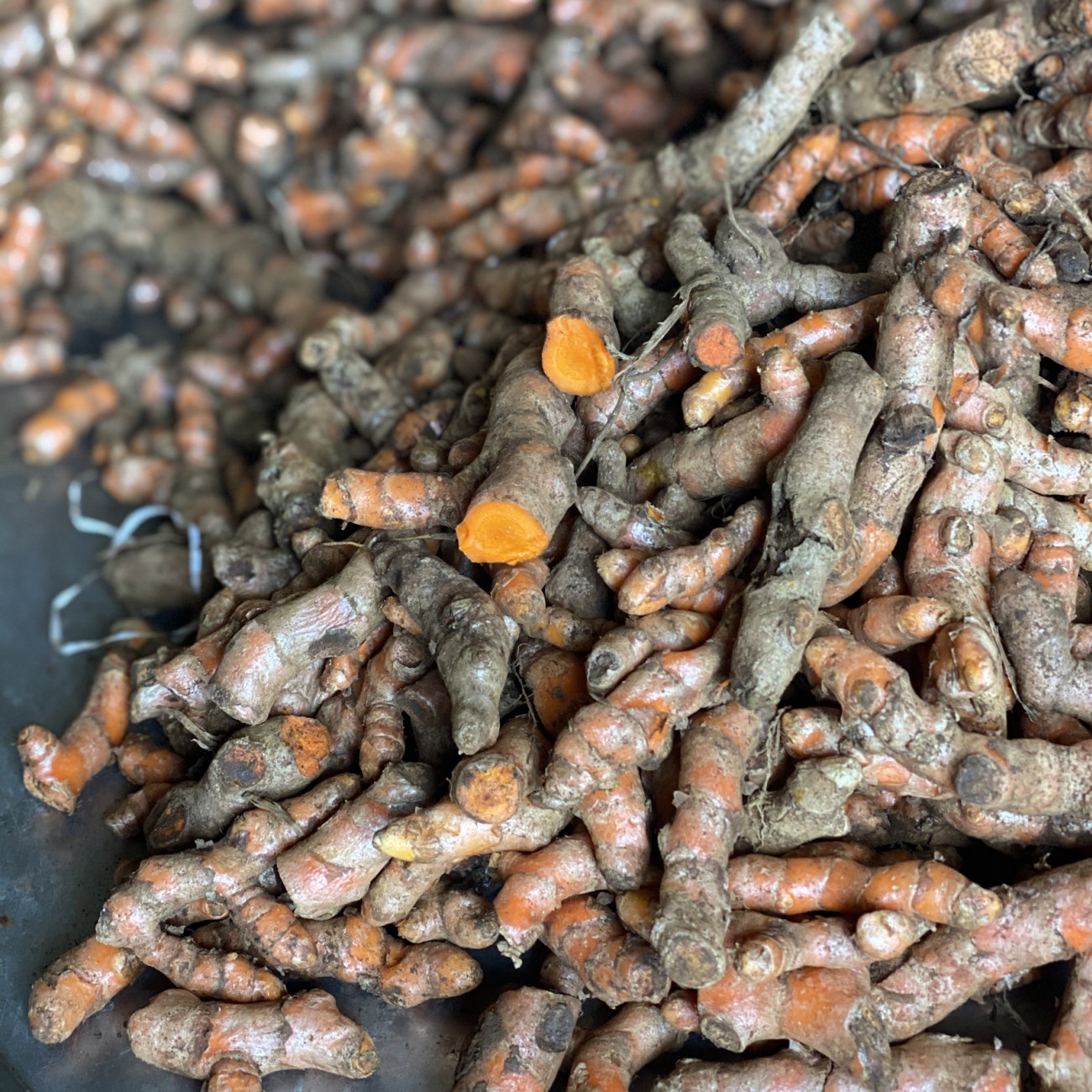
Our Turmeric : a true superfood
What’s turmeric?
Turmeric is a small rhizome, a root that grows underground, with a bright orange colour. Although turmeric is known as one of Asia’s premier spices, our variety only grows in Cambodia. It is a very small root that requires special care when harvested entirely by hand.
There are more than 110 species of turmeric, but it is the Longa variety that is the most widely cultivated and marketed. More than ¾ of the world’s production is now made in India. This is not very surprising when you consider the annual consumption of Indians: almost 2g per day. In other words, almost 90% of production is consumed directly in the country! However, turmeric has travelled over the centuries and around the world. It has travelled along land trade routes, such as the Silk Road, and sea trade routes, such as the East India route.
The various peoples who lived on these trade routes, from the East to the West, where the climate and environment were suitable for turmeric, learned to use the product and even assimilated it into their traditional medicines, their cultural dishes, and even into the rites implied by some of their beliefs.
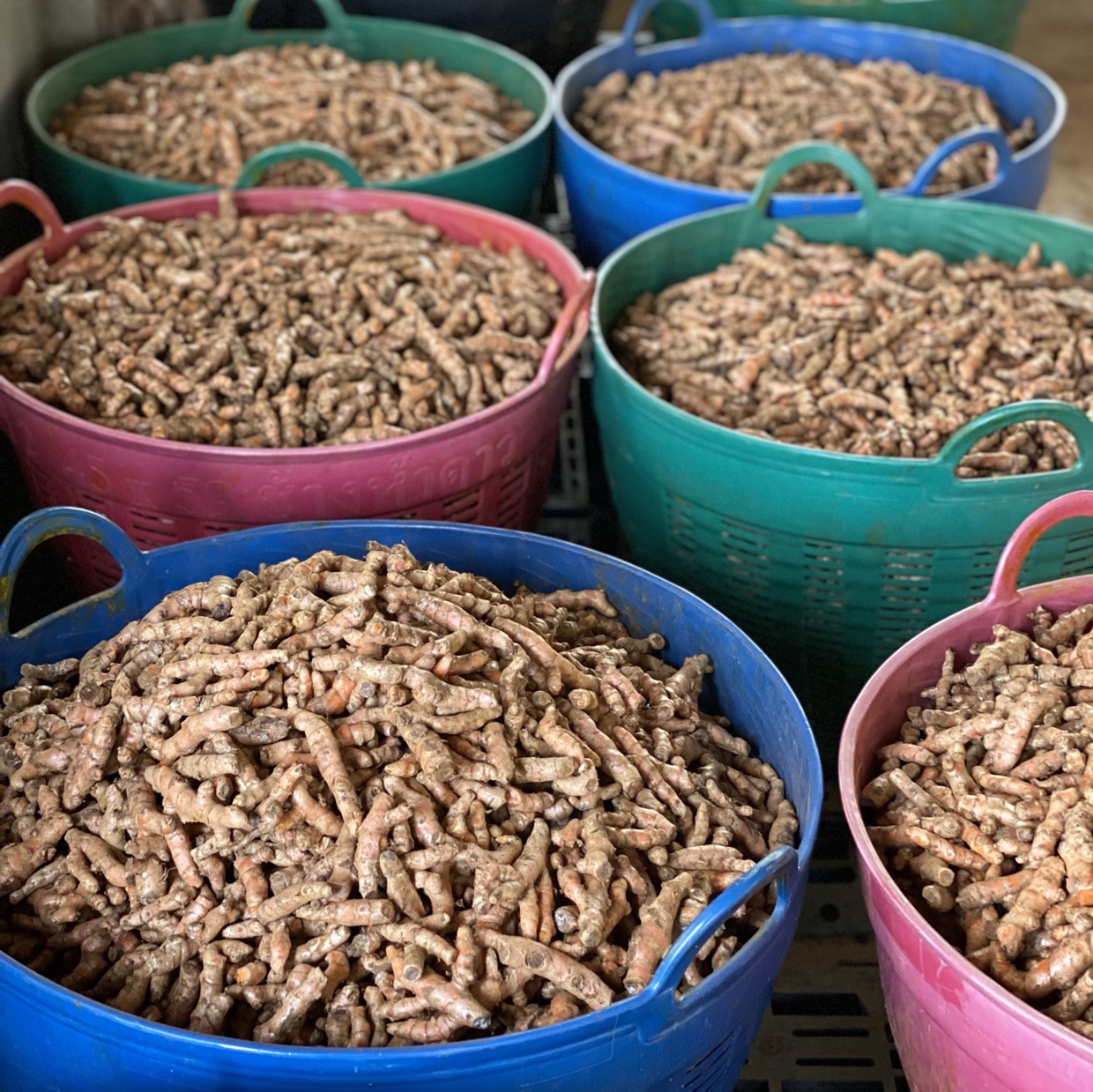
A bit of history on Turmeric Longa
Just over 2000 years ago, there are written records of turmeric in the West. The multi-volume work of the Greek physician Dioscorides, ‘About the Medical Material’, or ‘Materia Medica’ in Latin, describes more than 800 botanical species in what can be considered one of the precursors of Western pharmacopoeia.
Turmeric is described as “originating in India, and resembling ginger: when chewed, it has the properties of saffron”. It is easy to see why the plant’s best-known nickname today is “Indian Saffron”!
In the 13th century, in 1280, Marco Polo’s logbook also tells us that the spice was already being traded between China and India. It was only shortly afterwards, in the 15th century, through the colonisation of India by the English, that the spice was really assimilated into Asian culinary culture with the famous Indian curry: a mixture initially of cumin, coriander and, of course, turmeric.
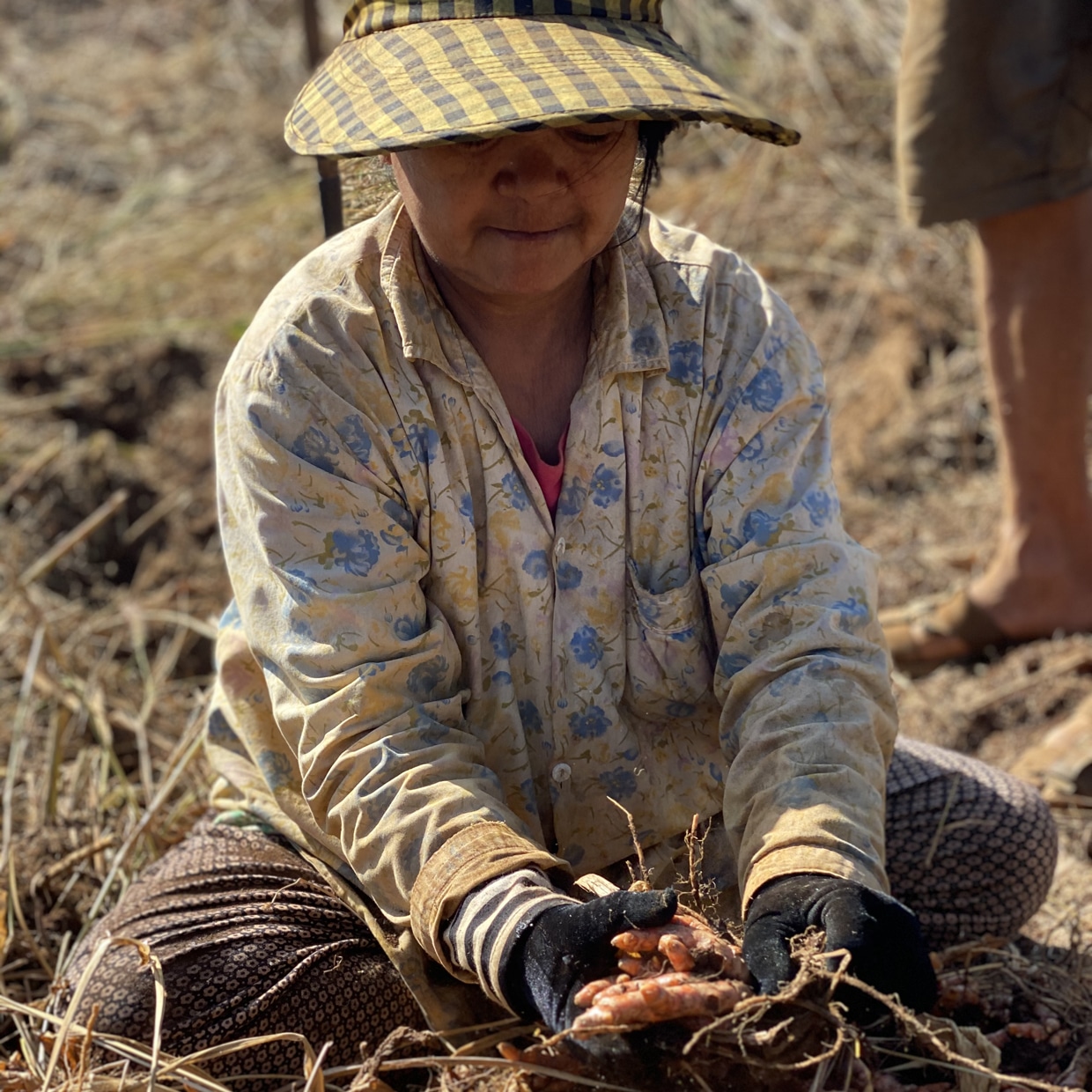
The freshness and quality of Turmeric grown at La Plantation
Under the banana trees, our turmeric thrives in the shade and sun of Cambodia. The cultivation system is largely based on an agroforestry system, i.e. the turmeric plants are not isolated in the field, but are accompanied by trees that line the land. This soil-friendly ecosystem is thus close to the natural environment in which the spice can be found, such as in a teak forest in the tropics.
The size of the plant, a variety specially chosen for its cultivation and high quality, is around 1 metre. The imposing, beautiful white flower, which is well known to florists, dominates the long, spiky leaves of the turmeric. Under the soil, the spice develops into numerous rhizomes. The variety cultivated at La Plantation is small in size, which favours the high concentration of curcumin. In December and January, after spending eight months in the rich soil of Kampot, these beneficial roots can finally be harvested as the stems dry out. Some of these rhizomes will be saved for replanting in the ground a few months later, giving them time to germinate.
La Plantation’s turmeric is certified organic by Ecocert, confirming the natural methods used to grow and process it, free of any pesticides or industrial fertilizers. Turmeric from our group of family farms is also grown naturally and will be included in our organic certification process shortly.
The turmeric is harvested by hand and processed on the day of harvest. This freshness contributes greatly to the aromatic power of our turmeric. The rhizomes are then selected, washed, peeled, sliced and dried in our solar greenhouses specially designed for this important step. Protected from UV rays, the natural molecules and compounds of our turmeric are thus perfectly preserved.
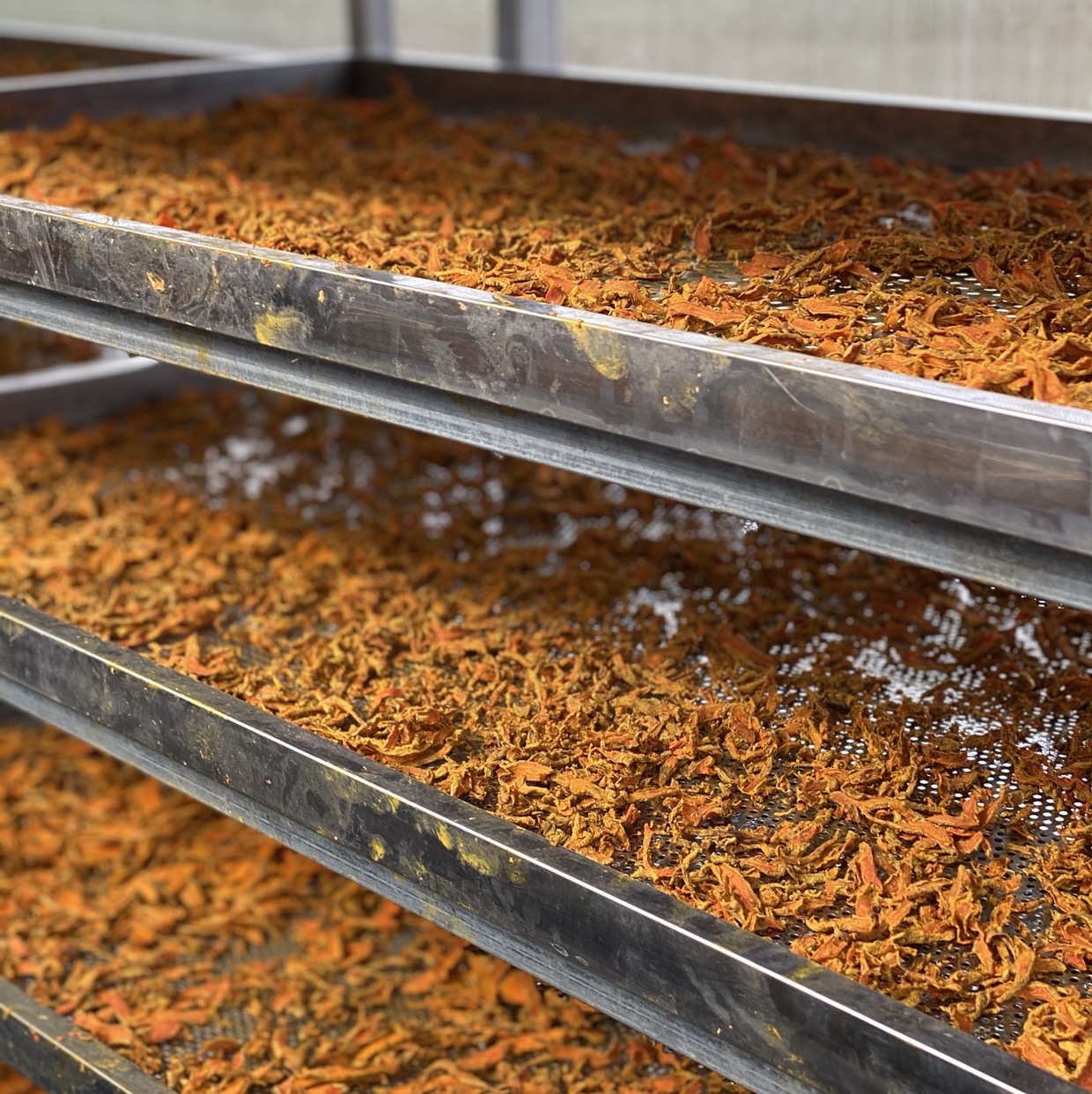
Our Flower of Turmeric: a ‘superfood’ with exceptional curcumin levels
The natural compounds in turmeric are of great importance. The most important pigment in the roots, the one that gives the rhizome its bright orange colour and benefits, is curcumin. La Plantation turmeric has a curcumin content of over 14%, as analysed by an independent laboratory. This is almost 4 times higher than the level of turmeric found on the market, which is around 3 to 5%.
The health properties of this molecule have also been studied and published in numerous scientific studies. Turmeric has strong anti-inflammatory and antioxidant properties. It is said to help reduce digestive disorders and total cholesterol levels in the blood. At the same time, it increases HDL, the “good” cholesterol. It is also said to have neuroprotective properties, preventing certain types of disease.
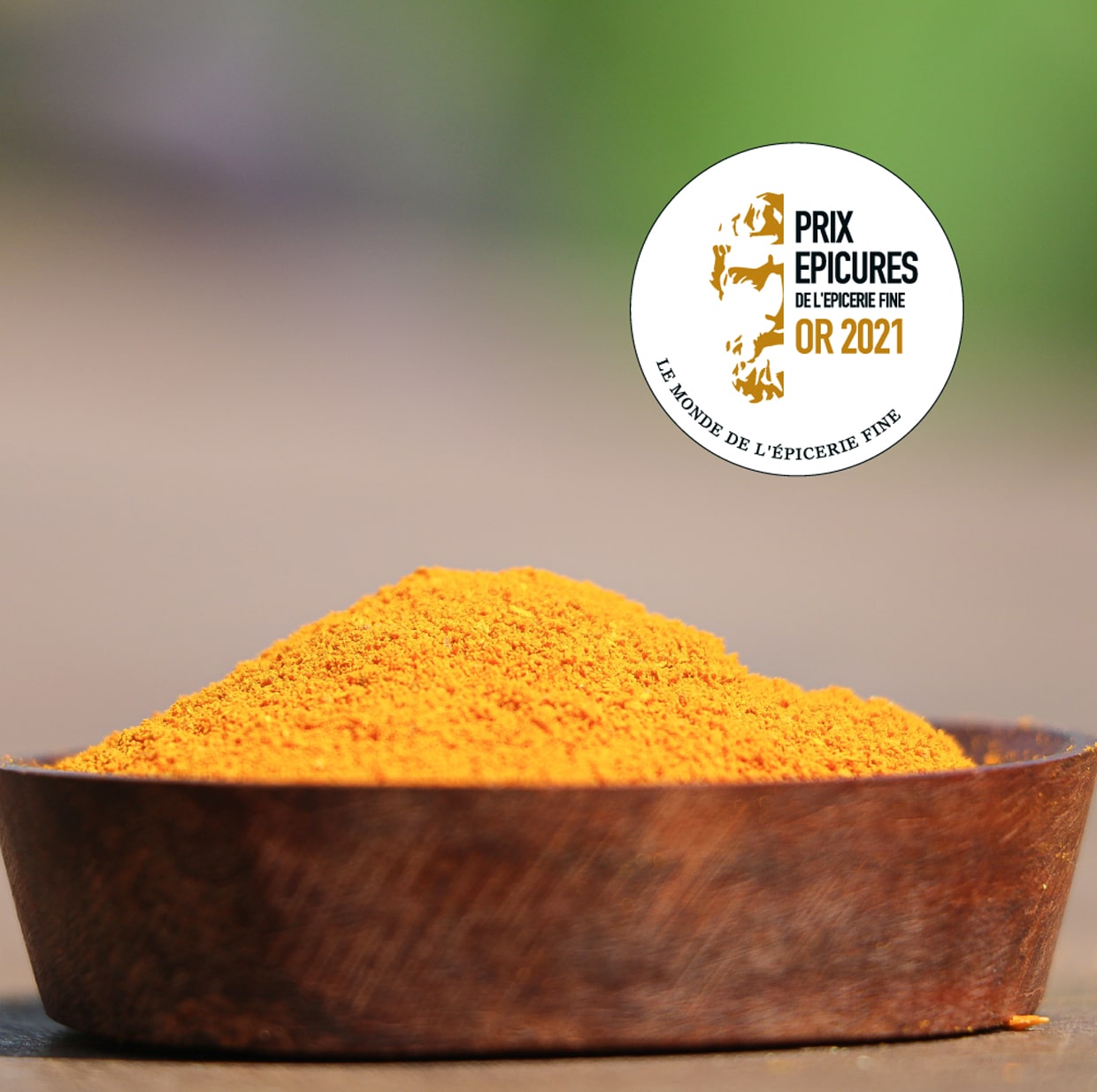
Awarded the Prix Épicures d’Or in 2021
Every year, a jury of food and delicatessen professionals selects the best products of the moment from hundreds of producers. In 2021, our Turmeric Flower received the highest distinction with the Epicures d’Or award, in the spices & condiments category. The jury particularly appreciated the unique aromatic quality of our Turmeric, and its intense colour.

Its best ally: Kampot Black Pepper
We hear a lot about the fact that curcumin is not, or only very slightly, bioavailable. This technical term means that the active ingredient is too quickly degraded in our body, or purified by our liver, before the molecule even meets our cells and plays its antioxidant or anti-inflammatory powers.
Today, it is a research challenge to find natural or synthetic ways to prolong the life of curcumin in our body, and thus get the maximum benefits. However, there is a natural combination that significantly increases the bioavailability of curcumin: its association with pepper and its active molecule, piperine, which is particularly present in black pepper.
Piperine can indeed inhibit, or at least reduce, the liver’s mechanism of evicting a molecule, in this case curcumin, from the body in the urine or stools. Thus the molecule, free and undegraded, can continue its way into the serum and the body. According to a 1992 study, researchers showed that for a dose of 20mg of piperine and 2000mg of curcumin absorbed, the bioavailability was increased by 2000% in healthy subjects. So much for the successful marriage between piperine and curcumin!
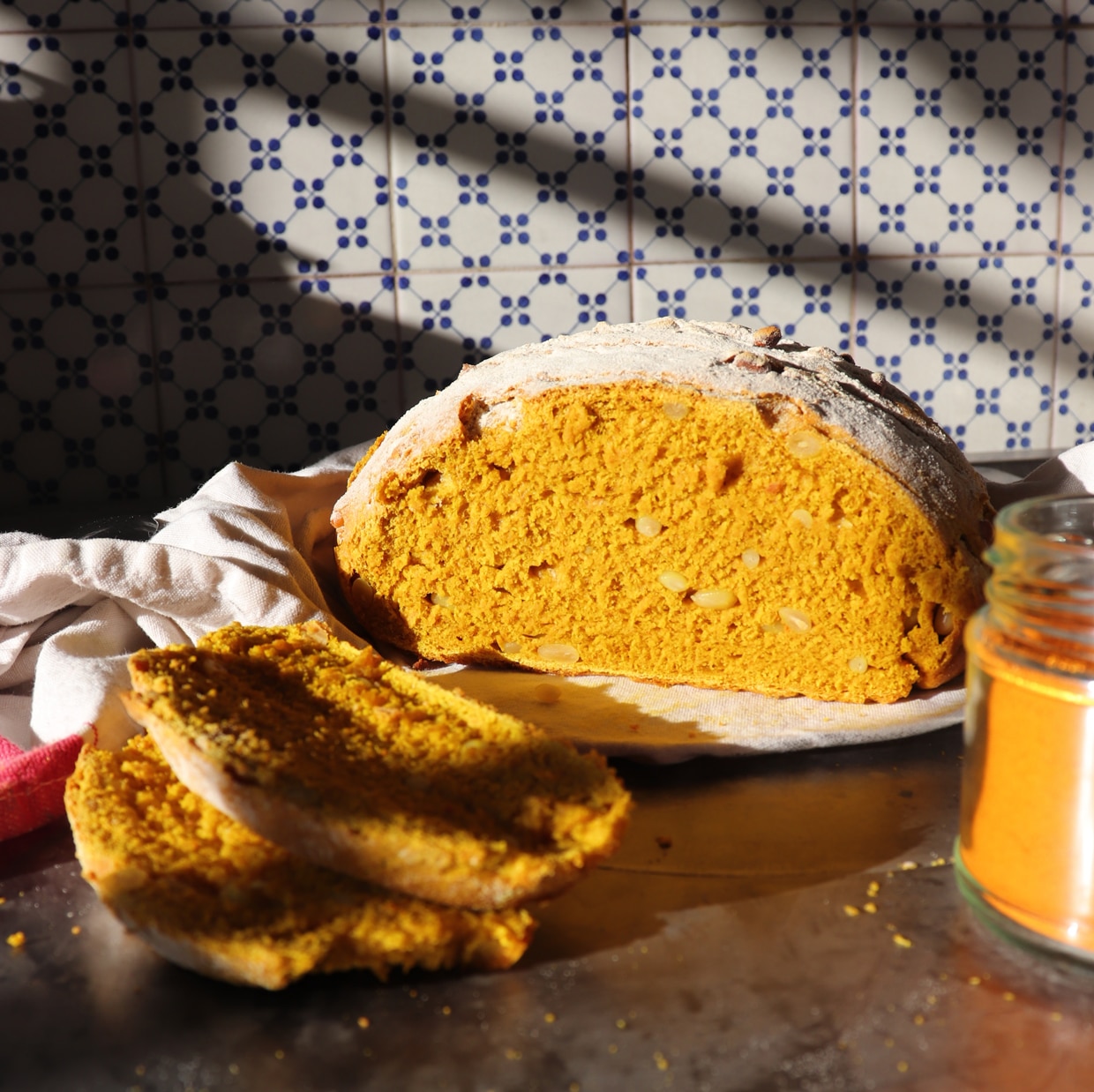
Turmeric in your cooking
Those who have smelled and tasted our Turmeric Flower know that its aroma is flowery and complex. At La Plantation, because it is rich in essential oils, turmeric is very aromatic and can be compared to a subtle blend of pepper, orange and ginger.
As already mentioned, turmeric is the number one spice in India and for good reason: it is the main ingredient in curries. Or rather curries, because there are countless ways of making these recipes in India, which differ according to region, custom, family…
Curries are in fact mixtures of spices to be incorporated into a soup, for meat, fish or often vegetables. Moreover, the name “curry”, which is used to describe these dishes, does not come from the plant of the same name, the Curry Leaves.
In Cambodia too, curries are an integral part of the local culture, a mark of the Indian influence on Cambodian cuisine. The most famous Cambodian curry is certainly Amok Trei, or fish amok. The fish is mixed with Khmer curry and fresh coconut milk, then steamed in a banana leaf. The beautiful orange colour of the dish comes from curcumin, which is also a powerful natural pigment. So be careful when cooking with turmeric, you may be stained for a few days!
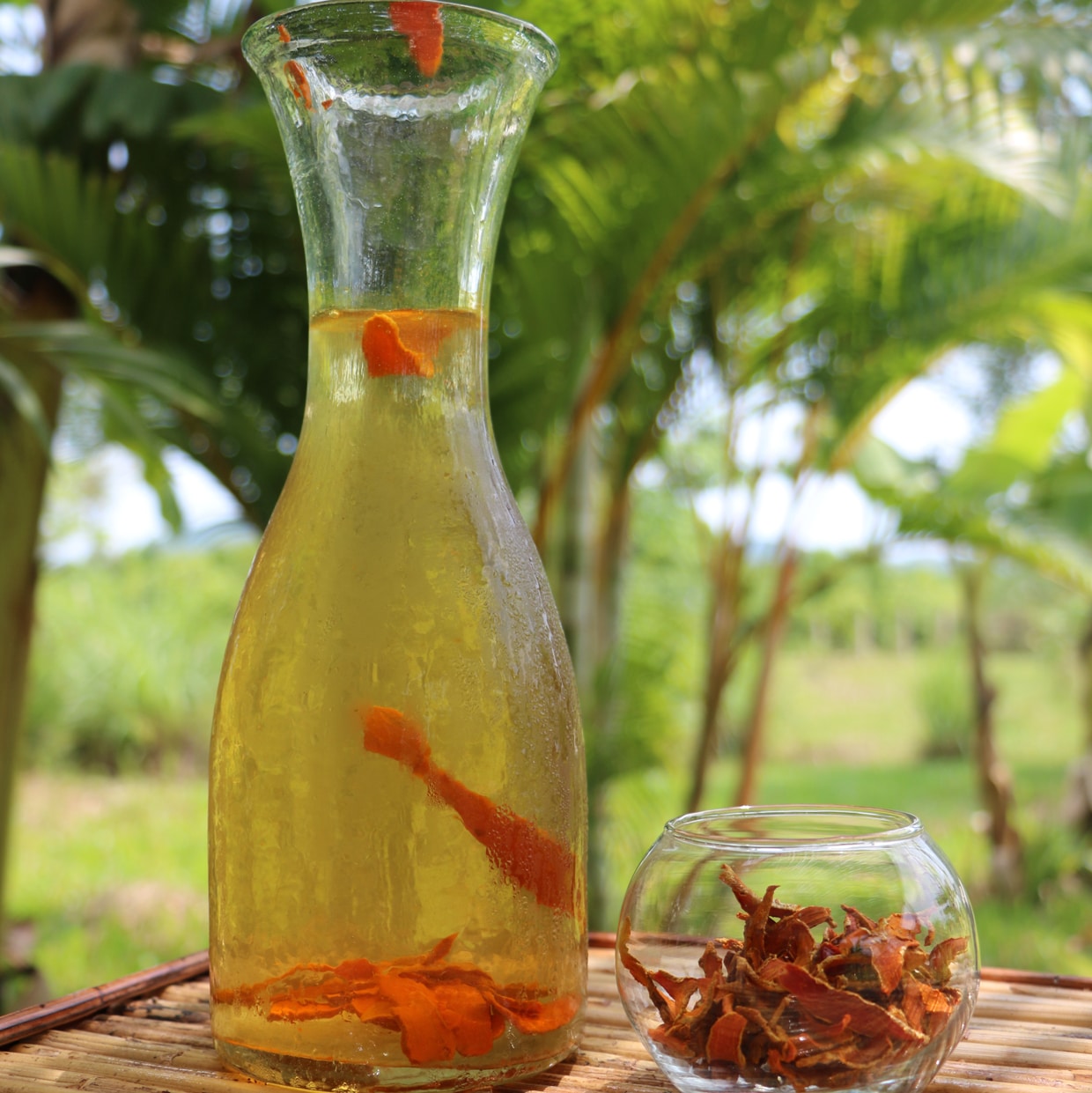
Our variations of turmeric
To take advantage of the aromas and benefits of turmeric, you can find it in two formats on our E-shop: our Turmeric Flower in powder or in Petals, i.e. in thin dehydrated slices. The first version is perfect for amok, for example, or for a preparation based on a spice mix, while the second is preferable for drinks such as infusions or decoctions, to release a maximum of flavour!

What about White Turmeric?
Our White Turmeric comes from a completely different species: Turmeric Zedoaria, also known as Zeodaria. Although less well known today, it has been consumed in Europe since the 6th century A.D. and was very famous in the Middle Ages for its unique aromatic palette. Its bright yellow colour distinguishes it from orange turmeric, and it develops notes of mango and ginger with a touch of bitterness. In fact, it is most similar to ginger! Discover it in powder form to vary the pleasures; it will add a unique spicy note to your marinades, to coat a chicken or a lamb before cooking. You can also sprinkle a little White Turmeric powder on a fish that is steamed or baked, with a drizzle of olive oil (extra virgin) and Fleur de Sel de Kampot, a real treat!
To your aprons, and bon appétit!

